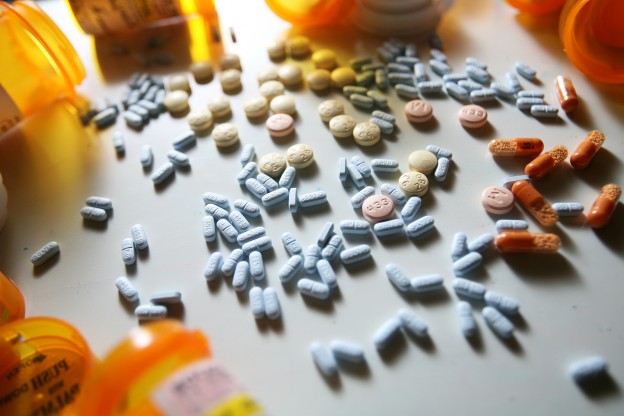By Brianna Jett
[Editor’s note: This story is a part of today’s special issue focused solely on drugs.]
From heroin to cocaine, from marijuana to alcohol, all drugs have one thing in common — they make you feel good.
And that’s science.
All drugs directly or indirectly increase the level of dopamine — a naturally occurring feel-good chemical in the brain.
“On a broad level, it actually doesn’t matter what kind of drug it is,” Ryan LaLumiere, a University of Iowa assistant professor who studies the neurobiology of drug addiction said. “They all end up having some effects on the dopamine system.”
Most drugs flood the brain’s reward system in the portions of the brain that regulates “movement, emotion, motivation, and feelings of pleasure,” according to the National Institute of Drug Abuse. Drugs then over-stimulate this system, leading to a euphoric sensation — the high.
The brain views dopamine-inducing activities as “life-sustaining,” and it therefore wants you to continue doing them. Dopamine is also released during non-drug experiences, such as eating, having sex, or exercising, but drugs increase dopamine levels by 2 to 10 times other activities.
And college students run the risk of forming an addiction simply because of their age.
LaLumiere said the brain hasn’t finished developing until people are 25. So, it translates like this: college students, often in an “experimental” part of their lives, are more likely to form addictions with their still-developing brains.
“We have good evidence that drugs of abuse are actually more addictive when you are younger when you start using them, and that’s whether they are legal drugs such as alcohol and nicotine or illicit drugs,” he said.
And once young adults start using drugs, their still-growing brains can be reshaped by the drugs they are using.
One of the last parts to develop is the prefrontal cortex which deals with impulse control and inhibiting risky behavior. LaLumiere said too much drug use can alter how this system develops and make it even harder to say no.
There are two different ways the body can become dependent on a drug. The first is physical dependence. According to the National Institute on Drug Abuse, physical dependence occurs when a person’s body adapts to a drug, therefore requiring more of the drug to achieve a high.
The brain adjusts to these varying levels of dopamine, often producing less of the chemical, and that can push a person to search out that increase of dopamine.
If that supply is stopped abruptly, it can lead to withdrawal symptoms, including tremors, nausea, vomiting, and palpitations.
Marijuana has a low physical dependence, while heroin has a high physical dependence.
“With cocaine, the physical withdrawal symptoms are minimal compared to other drugs of abuse like heroin,” LaLumiere said.
Another potential lasting effect of a drug addiction is a motivational dependence, something that can be likened to a craving.
“When we’re talking about addiction, we’re really talking about that motivation,” LaLumiere said.
Motivation is what leads to relapse. While LaLumiere admits withdrawal symptoms can be severe, he said they can go away within a month. The cravings, though, last and make sobriety difficult.
For example, heroin has a strong physical dependence. It is an opiate and provides pain relief. Once taken, the body begins to make less of its own pain relievers. Not only does this mean the user must take more and more of the opiate to feel the same thing, but when the drugs stop, the body feels “tremendous pain.”
Cocaine, too, can leave a person craving more for an extended period of time.
Instead, LaLumiere said, the motivational dependence is so severe that when users stop, they often suffer from anhedonia, which essentially means they are unable to find pleasure in life.
Courtney Brennamen, a counselor at Resolutions Substance Abuse Services in Iowa City, has met with many UI students seeking treatment. Often, she sees students who have gotten in trouble with the law, for either OWI or for possessing illicit drugs. But, she said, in her experience, age can make a big difference.
“Because they are in a different place in their lives and they aren’t fully developed, they are more impulsive and susceptible to relapse,” Brennamen said.







